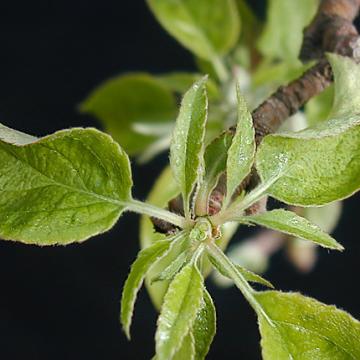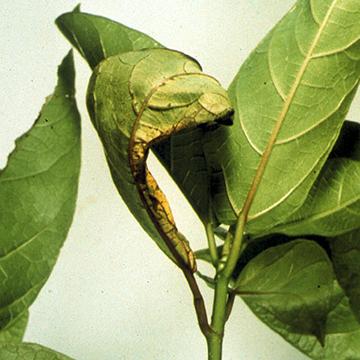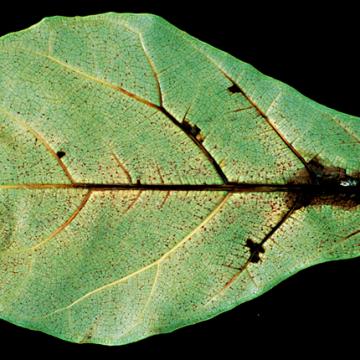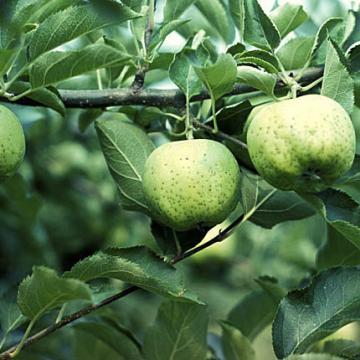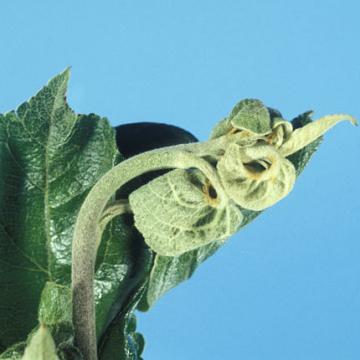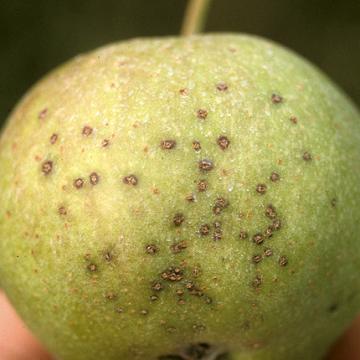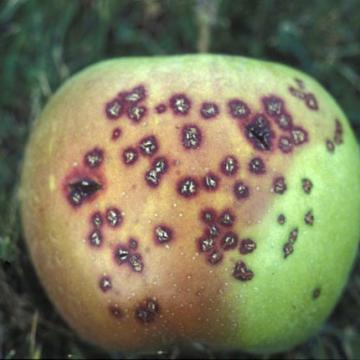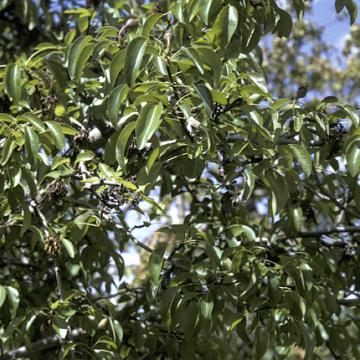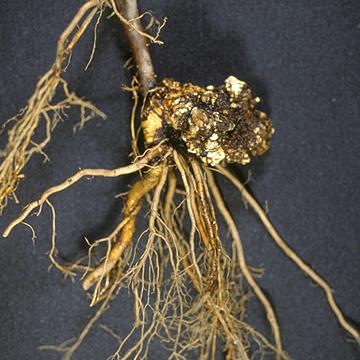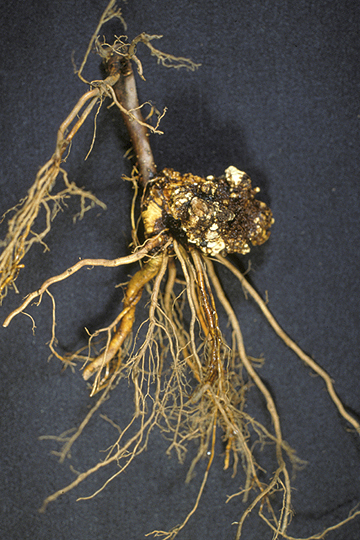DISEASE: Apple proliferation
HOST: Apple
Enlarged stipules on leaf. Witches'-brooms, rosettes, and enlarged stipules are the most reliable symptoms for identification.
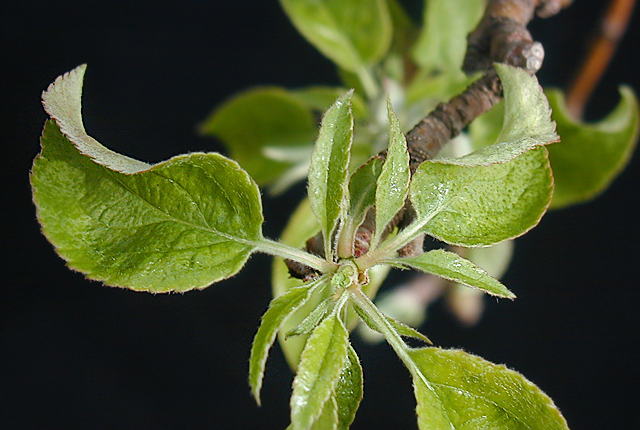
Apple proliferation | Apple
DISEASE: Apple proliferation
HOST: Apple (Malus domestica 'Granny Smith')
PATHOGEN: 'Candidatus Phytoplasma mali'
PATHOGEN SYNONYM: Phytoplasma Apple proliferation group
SOURCE: M. Wolf, W. Schweigkofler
DISEASE: Bacterial leaf spot and blight
HOST: Ficus
Infected twig with blight.
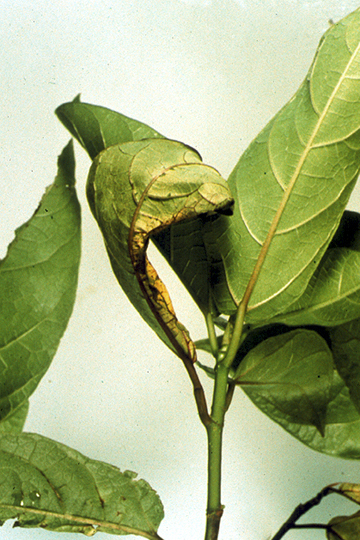
Bacterial leaf spot and blight | Ficus
DISEASE: Bacterial leaf spot and blight
HOST: Ficus (Ficus erecta)
PATHOGEN: Pseudomonas ficuserectae
SOURCE: M. Goto
DISEASE: Bacterial leaf spot
HOST: Ficus
Leaf exhibiting systemic invasion of veinal tissues.
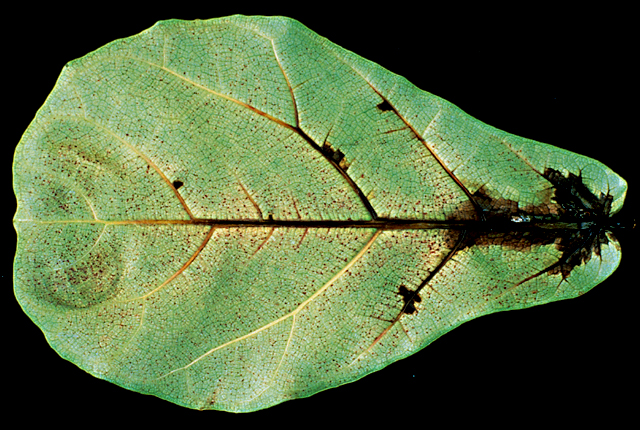
Bacterial leaf spot | Ficus
DISEASE: Bacterial leaf spot
HOST: Ficus (Ficus lyrata)
PATHOGEN: Pseudomonas cichorii
SOURCE: J. Yuen
DISEASE: Blister spot
HOST: Apple
Fruit with water-soaked spots.
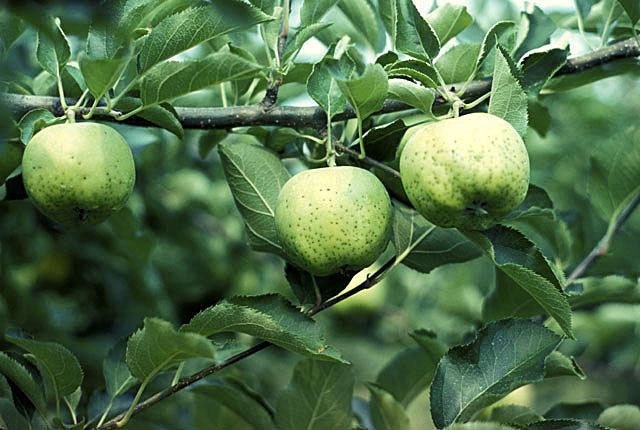
Blister spot | Apple
DISEASE: Blister spot
HOST: Apple (Malus domestica)
PATHOGEN: Pseudomonas syringae pv. papulans
SOURCE: T. Burr
DISEASE: Blister spot
HOST: Apple
Water-soaked blister spots on leaves of blighted twig.
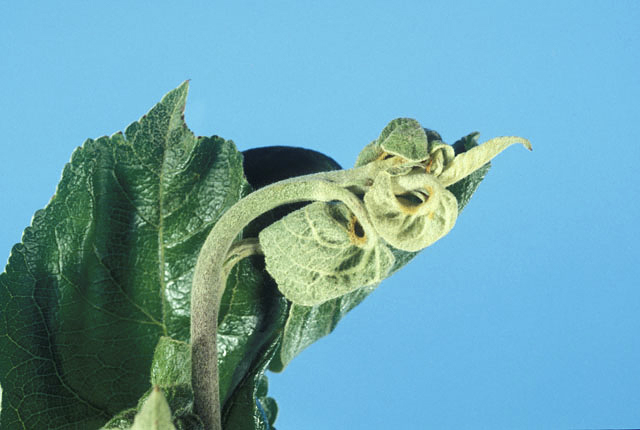
Blister spot | Apple
DISEASE: Blister spot
HOST: Apple (Malus domestica)
PATHOGEN: Pseudomonas syringae pv. papulans
SOURCE: T. Burr
DISEASE: Blister spot
HOST: Apple
Apple with brownish blister spots.
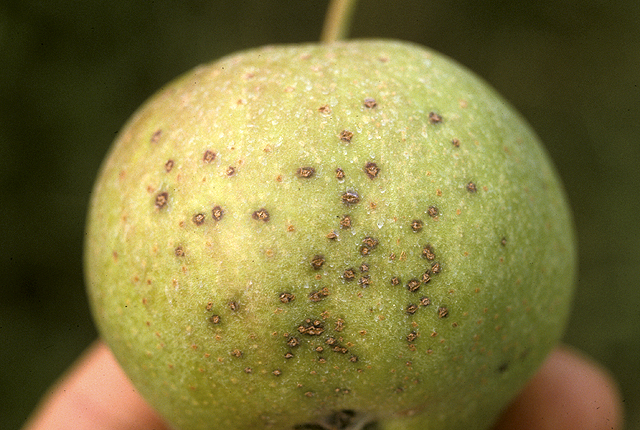
Blister spot | Apple
DISEASE: Blister spot
HOST: Apple (Malus domestica 'Mutsu')
PATHOGEN: Pseudomonas syringae pv. papulans
SOURCE: S. Thomson
DISEASE: Blister spot
HOST: Apple
Late stage of blister spot. The purplish black lesions are associated with lenticels and stomata.
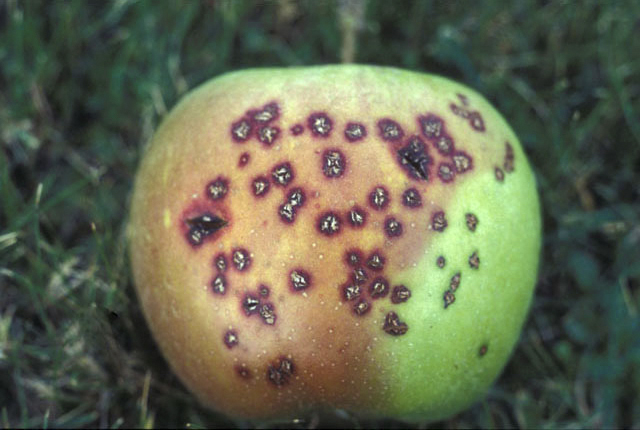
Blister spot | Apple
DISEASE: Blister spot
HOST: Apple (Malus domestica 'Crispin')
PATHOGEN: Pseudomonas syringae pv. papulans
SOURCE: T. Burr
DISEASE: Blossom blast
HOST: Apple
Many dead, shriveled flowers and young shoots. It differs from fire blight, with infections being relatively localized with the appearance of being "blasted".
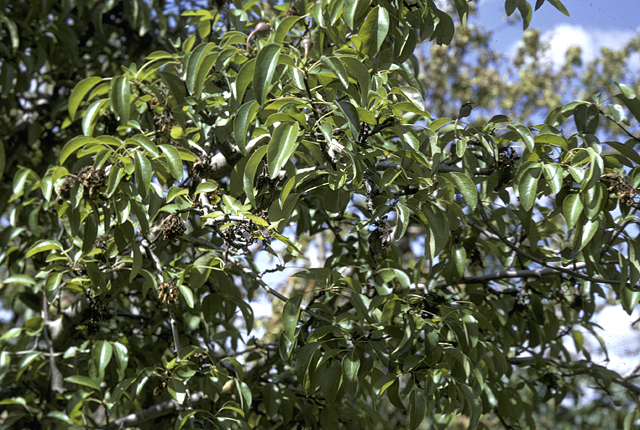
Blossom blast | Apple
DISEASE: Blossom blast
HOST: Apple (Malus domestica)
PATHOGEN: Pseudomonas syringae pv. syringae
SOURCE: M. Schroth


